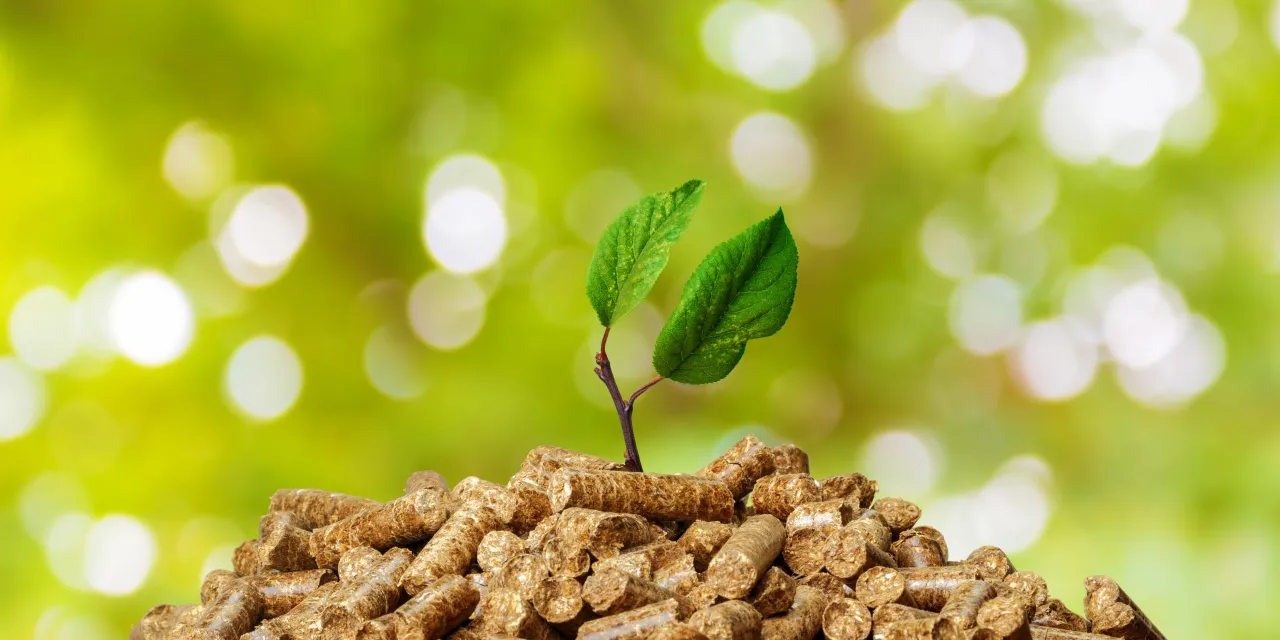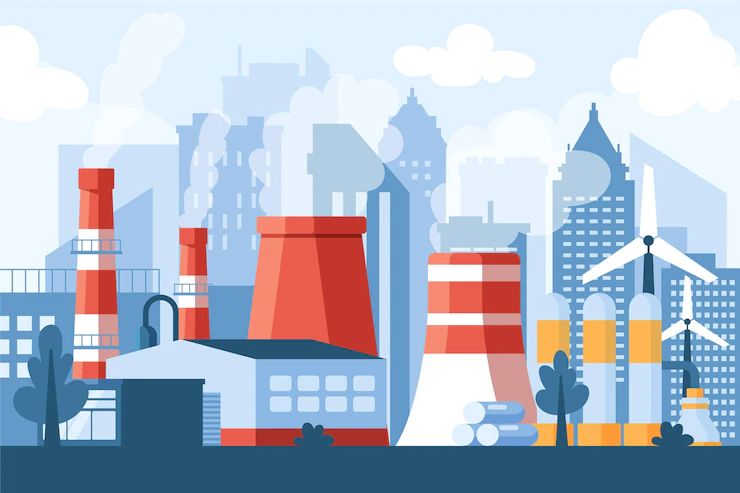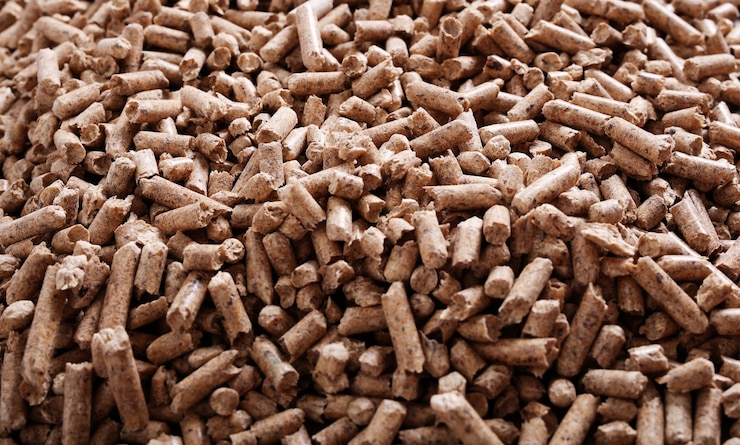
- Biomass cofiring is one of the activities in the Green Booster program that can be interpreted as top priority, most expected, and relied on to increase the proportion of new renewable energy in the national energy mix.
- Biomass cofiring at PLTU in Indonesia began in June 2020 at PLTU Paiton 1-2, using sawdust and woodchips; now, biomass cofiring has been implemented in 36 PLTU PLN; the 36th PLTU that implements biomass cofiring is PLTU Sebalang, beginning December 21, 2022.
- The ideal conditions for a national scale cofiring biomass industry are long-term supply at an economical price and funding support available, however, until now, there has been no long-term supply.
Indonesian Biomass Cofiring Target
The Indonesian government is looking for a breakthrough in biomass utilization to reduce the use of fossil energy, specifically coal, which is still dominant, and to promote the achievement of the new renewable energy mix target of 23% by 2025. One of the areas being promoted is the use of co-firing biomass in power plants as a substitute for coal. Biomass cofiring is one of the activities in the Green Booster program that can be interpreted as top priority, most expected, and relied on to increase the proportion of new renewable energy in the national energy mix. Quoted from the website of the Indonesian Ministry of Energy and Mineral Resources, Director of Bioenergy at the Directorate General of New, Renewable Energy and Energy Conservation Andriah Feby Misna said that “We encourage co-firing of biomass in coal-fired power plants in the hope of meeting the target of an additional energy mix of 1-3 % in 2025 and is committed to continuing the use of B30 and will continue to develop higher blended biodiesel in the near future, namely the B40 trial”. Biomass development whose utilization potential will be optimized is biomass pellets sourced from all types of organic waste with the hope that it will increase national energy independence and optimize the potential for biomass power plants which so far have only reached less than 1.9 GW out of a total potential of around 32 GW.
Read more
- Co-firing Biomassa Tengah Dikembangkan, Apakah Cukup Efektif Untuk Mendorong Transisi Energi di Indonesia?
- Program Co-Firing PLN Untuk Tambah Porsi EBT Biomassa Hingga 20 Persen di PLTU Pulang Pisau
Current Implementation of Biomass Cofiring in Indonesia

At PLTU, biomass cofiring adds biomass as a partial replacement fuel to the coal boiler without requiring significant modification. Biomass can be derived from plants (wood chips and pellets) or from waste. The cofiring technique used is called “Direct Cofiring”. Cofiring of biomass through direct combustion is the simplest and most widely used technology currently available. Because biomass contains less sulfur, it is thought to be capable of reducing global warming and rapidly increasing the renewable energy mix. Because it only uses existing power plants, biomass is also considered simple and inexpensive because it does not necessitate the construction of a new power plant. In addition, cofiring biomass provides community welfare because it creates a multiplier effect for the community in the supply of biomass. On the other hand, it saves fossil or coal energy and provides an alternative to waste management without the need to construct a PLTSA. According to MEBI, biomass cofiring at PLTU in Indonesia began in June 2020 at PLTU Paiton 1-2, using sawdust and woodchips; now, biomass cofiring has been implemented in 36 PLTU PLN; the 36th PLTU that implements biomass cofiring is PLTU Sebalang, beginning December 21, 2022.
Read more
- Menuju Transisi Energi : Woodpellet atau Batu Bara?
- PLN Meets the 23 Percent Energy Mix Target Through Cofiring Technology
Absence of Long Term Cofiring Biomass Raw Material Supply

The issue is that there are not nearly enough raw materials made from biomass, which means that the cofiring project, from an economic standpoint, has not been fulfilled. Alternatively, the cost of using biomass is higher than the cost of using coal in its purest form. In point of fact, the cofiring program has the potential to make a beneficial contribution to Indonesia’s economic turnover by, among other things, creating new job opportunities and offering new approaches to the problem of waste management. The availability of a supply of raw materials in the form of production forest products, palm shells, or waste that is not only simple to obtain but also maintains its quality is an essential component of sustainable development. “Shifting to biomass” is occurring in a variety of Indonesian industries, which makes sense when one considers the rising cost of biomass (wood pellets) on the international market. The market for export promises very high prices, while the domestic market for non-energy uses also offers prices that are higher than the price of biomass for cofiring. It is possible to obtain prices that are competitive if the distance from the distribution point of the biomass raw materials to the location of the PLTU is less than or equal to one hundred kilometers. The ideal conditions for a national scale cofiring biomass industry are long-term supply at an economical price and funding support available, however, until now, there has been no long-term supply.
#zonaebt #sebarterbarukan #ebtheroes
Editor: Himatul Azqiya
Referensi
[1] Perkembangan Cofiring Biomassa pada PLTU
[2] Indonesia’s Biomass Cofiring Bet: Beware of the Implementation Risks





185 Comment
reputable mexican pharmacies online
https://cmqpharma.online/# mexican border pharmacies shipping to usa
п»їbest mexican online pharmacies
best online pharmacies in mexico: mexican pharmacy – mexico pharmacies prescription drugs
http://indiapharmast.com/# india pharmacy mail order
buying from online mexican pharmacy: medication from mexico pharmacy – reputable mexican pharmacies online
https://mexicandeliverypharma.online/# buying prescription drugs in mexico online
best online pharmacies in mexico: mexican border pharmacies shipping to usa – best online pharmacies in mexico
mexican mail order pharmacies: mexican mail order pharmacies – medication from mexico pharmacy
mexican mail order pharmacies: medicine in mexico pharmacies – best online pharmacies in mexico
mexican drugstore online: buying prescription drugs in mexico online – medication from mexico pharmacy
mexican rx online: п»їbest mexican online pharmacies – п»їbest mexican online pharmacies
mexican pharmaceuticals online: medicine in mexico pharmacies – mexican rx online
buying from online mexican pharmacy: mexico drug stores pharmacies – buying prescription drugs in mexico online
reputable mexican pharmacies online: mexican online pharmacies prescription drugs – buying prescription drugs in mexico
mexican border pharmacies shipping to usa: mexico drug stores pharmacies – reputable mexican pharmacies online
п»їbest mexican online pharmacies: buying prescription drugs in mexico online – mexican pharmaceuticals online
mexican pharmaceuticals online: purple pharmacy mexico price list – best online pharmacies in mexico
mexico drug stores pharmacies: buying from online mexican pharmacy – best online pharmacies in mexico
buying from online mexican pharmacy: mexican online pharmacies prescription drugs – buying prescription drugs in mexico online
mexican border pharmacies shipping to usa: mexican mail order pharmacies – mexico drug stores pharmacies
mexican border pharmacies shipping to usa: mexican online pharmacies prescription drugs – buying prescription drugs in mexico
medicine in mexico pharmacies: mexico drug stores pharmacies – mexico pharmacies prescription drugs
buying prescription drugs in mexico: mexican drugstore online – mexican pharmaceuticals online
mexican pharmaceuticals online: purple pharmacy mexico price list – reputable mexican pharmacies online
average cost of generic prednisone: prednisone price australia – over the counter prednisone cream
cytotec abortion pill: cytotec online – п»їcytotec pills online
alternative to tamoxifen: tamoxifen rash – tamoxifen vs raloxifene
Farmacie online sicure: farmacia online migliore – top farmacia online
comprare farmaci online all’estero: Cialis generico controindicazioni – migliori farmacie online 2024
viagra ordine telefonico: viagra farmacia – cerco viagra a buon prezzo
Farmacie on line spedizione gratuita: sildenafil oral jelly 100mg kamagra – Farmacie on line spedizione gratuita
https://sildenafil.llc/# cialis vs viagra
blue pill viagra: buy sildenafil online canada – viagra price
https://tadalafil.auction/# cialis generic dapoxetine
buy viagra professional: Cheap Viagra online – over the counter alternative to viagra
how can i get cheaper cialis: cialis professional india – cialis 20 mg tadalafil
where to get ed pills: online ed prescription same-day – buy erectile dysfunction pills
https://mexicopharmacy.win/# medicine in mexico pharmacies
buying ed pills online
https://mexicopharmacy.win/# purple pharmacy mexico price list
pharmacy website india: india pharmacy – cheapest online pharmacy india
http://edpillpharmacy.store/# online ed medications
ed treatments online
https://edpillpharmacy.store/# cheapest erectile dysfunction pills
http://mexicopharmacy.win/# best online pharmacies in mexico
ed drugs online
mexican mail order pharmacies: mexican pharmacy – reputable mexican pharmacies online
indian pharmacies safe: Online medicine home delivery – indian pharmacy paypal
https://indiapharmacy.shop/# buy medicines online in india
ed medicine online: Cheap ED pills online – ed online treatment
https://mexicopharmacy.win/# mexico drug stores pharmacies
https://edpillpharmacy.store/# buying erectile dysfunction pills online
https://edpillpharmacy.store/# cheap boner pills
http://indiapharmacy.shop/# reputable indian online pharmacy
http://edpillpharmacy.store/# discount ed pills
https://indiapharmacy.shop/# top 10 pharmacies in india
https://tamoxifen.bid/# what is tamoxifen used for
http://lipitor.guru/# buying lipitor online
buy cytotec over the counter cheapest cytotec cytotec online
http://lipitor.guru/# lipitor 40 mg generic price
tamoxifen dosage: Purchase Nolvadex Online – tamoxifen adverse effects
http://lipitor.guru/# lipitor prescription
lipitor 40 mg tablet lipitor otc buy cheap lipitor online
lipitor 30 mg: cheapest ace inhibitor – lipitor price uk
best lisinopril brand: Lisinopril refill online – lisinopril 1 mg
https://cytotec.pro/# buy cytotec pills online cheap
tamoxifen effectiveness: tamoxifen 20 mg tablet – tamoxifen effectiveness
https://lipitor.guru/# lipitor australia
http://easyrxcanada.com/# safe reliable canadian pharmacy
https://easyrxindia.shop/# online shopping pharmacy india
https://easyrxcanada.com/# canadian pharmacy world reviews
canada pharmacy reviews canadian drugs pharmacy best canadian online pharmacy
https://easyrxindia.shop/# india pharmacy
http://easyrxindia.com/# Online medicine home delivery
http://easyrxcanada.com/# reputable canadian online pharmacy
https://easyrxcanada.online/# best canadian pharmacy online
https://easyrxcanada.online/# canadian neighbor pharmacy
slot kumar siteleri: deneme bonusu veren siteler – canl? slot siteleri
deneme bonusu veren siteler: bahis siteleri – bahis siteleri
bonus veren slot siteleri: oyun siteleri slot – slot oyunlar? siteleri
http://denemebonusuverensiteler.win/# deneme bonusu veren siteler
1win вход 1вин зеркало 1win вход
пин ап вход: пин ап казино вход – пин ап зеркало
http://vavada.auction/# vavada online casino
1вин сайт: 1win зеркало – 1win
http://1xbet.contact/# 1хбет зеркало
1xbet скачать: 1xbet официальный сайт мобильная версия – 1xbet официальный сайт
http://vavada.auction/# vavada казино
vavada: казино вавада – vavada казино
казино вавада: vavada – казино вавада
https://vavada.auction/# vavada online casino
вавада казино: вавада рабочее зеркало – вавада зеркало
viagra in mexico pharmacy: overseas pharmacy adipex – depo provera pharmacy
sildenafil citrate pharmacy: what is rx in pharmacy – pharmacy choice acyclovir cold sore cream
https://easydrugrx.com/# rx mart pharmacy
plavix pharmacy price
https://onlineph24.com/# egypt pharmacy viagra
best pharmacy store
effexor xr pharmacy: pharmacies near me – pharmaceuticals online australia
target finasteride pharmacy: mexican pharmacy what to buy – boots pharmacy diflucan
hcg online pharmacy: pharmacy rx one coupon code – cialis pharmacy online uk
omeprazole people’s pharmacy: the medicine store pharmacy – online pharmacy degree programs
world pharmacy india п»їlegitimate online pharmacies india indian pharmacies safe
buying from online mexican pharmacy: mexican pharmaceuticals online – mexican pharmaceuticals online
mexico drug stores pharmacies: reputable mexican pharmacies online – mexico drug stores pharmacies
https://pharmbig24.online/# online pharmacy estradiol valerate
lexapro pharmacy assistance program: blink pharmacy – viagra from usa pharmacy
top 10 online pharmacy in india: п»їlegitimate online pharmacies india – best india pharmacy
https://indianpharmacy.company/# buy prescription drugs from india
mexico drug stores pharmacies: best online pharmacies in mexico – purple pharmacy mexico price list
pharmacies in mexico that ship to usa: mexican pharmaceuticals online – purple pharmacy mexico price list
Zerit rx pharmacy richland wa rx pharmacy richland
remote consultation online pharmacy: tadalafil pharmacy online – provigil pharmacy
https://pharmbig24.online/# online pharmacy price checker
mexico pharmacies prescription drugs mexican rx online mexico pharmacies prescription drugs
online pharmacy ativan: medco pharmacy viagra – worldwide pharmacy kamagra
https://pharmbig24.online/# online drug store
inhouse pharmacy baclofen pantoprazole pharmacy doxycycline from pharmacy
top online pharmacy india: Online medicine order – top online pharmacy india
buying prescription drugs in mexico online: mexican rx online – medication from mexico pharmacy
online pharmacy zyprexa atomoxetine online pharmacy harlem rx pharmacy
indian pharmacy online: buy medicines online in india – buy prescription drugs from india
http://indianpharmacy.company/# Online medicine order
no prescription online pharmacy: v pharmacy accutane – all med pharmacy
indian pharmacy strattera cheapest pharmacy to get prescriptions filled u s online pharmacy
phendimetrazine online pharmacy: watson pharmacy viagra – rx outreach pharmacy
https://pharmbig24.com/# pharmacy cialis online
pharmacy website india indian pharmacies safe best online pharmacy india
quality rx pharmacy hyde park ma: cheapest online pharmacy india – propranolol indian pharmacy
reputable indian pharmacies india pharmacy mail order best india pharmacy
online pharmacy ambien: online dog pharmacy – can you get viagra from the pharmacy
https://indianpharmacy.company/# india pharmacy mail order
mexican mail order pharmacies: medicine in mexico pharmacies – mexican rx online
mexico drug stores pharmacies buying prescription drugs in mexico mexico drug stores pharmacies
pharmacy shop: pharmacy online prescription – cialis online pharmacy australia
mexico drug stores pharmacies: mexican pharmaceuticals online – mexico drug stores pharmacies
https://mexicopharmacy.cheap/# reputable mexican pharmacies online
cymbalta indian pharmacy thyroxine pharmacy mouse pharmacy viagra
purple pharmacy mexico price list: medication from mexico pharmacy – medication from mexico pharmacy
peoples pharmacy austin store hours: adipex online pharmacy – domperidone us pharmacy
purple pharmacy mexico price list purple pharmacy mexico price list buying from online mexican pharmacy
п»їlegitimate online pharmacies india: cheapest online pharmacy india – india pharmacy
gates of olympus slot gates of olympus giris gates of olympus oyna
Gates of Olympus gates of olympus oyna demo gates of olympus demo
betine betine guncel betine
https://betine.online/# betine sikayet
gate of olympus oyna gates of olympus turkce Gates of Olympus
casibom casibom guncel giris casibom guncel
farmacia online barata: farmacia 24 horas – farmacia en casa online descuento
http://tadalafilo.bid/# farmacia online envГo gratis
sildenafilo cinfa 100 mg precio farmacia: sildenafilo precio – comprar sildenafilo cinfa 100 mg espaГ±a
farmacia online barcelona farmacia online envio gratis farmacia en casa online descuento
http://tadalafilo.bid/# farmacia online madrid
п»їfarmacia online espaГ±a
farmacia online envГo gratis: farmacia 24 horas – farmacia online madrid
farmacia barata precio cialis en farmacia con receta farmacia online barata
https://farmaciaeu.com/# farmacia barata
farmacias online seguras en espaГ±a
http://sildenafilo.men/# viagra online gibraltar
farmacia barata
http://tadalafilit.com/# acquisto farmaci con ricetta
farmacia online senza ricetta
viagra naturale in farmacia senza ricetta: viagra prezzo – gel per erezione in farmacia
siti sicuri per comprare viagra online viagra viagra online consegna rapida
п»їFarmacia online migliore: Cialis generico prezzo – п»їFarmacia online migliore
comprare farmaci online all’estero: Farmacie che vendono Cialis senza ricetta – farmacie online autorizzate elenco
migliori farmacie online 2024 farmacia online migliore Farmacie on line spedizione gratuita
migliori farmacie online 2024: farmacia online migliore – farmacia online piГ№ conveniente
farmacia online senza ricetta farmaci senza ricetta elenco Farmacie on line spedizione gratuita
п»їFarmacia online migliore: Cialis generico recensioni – Farmacia online miglior prezzo
farmacie online sicure Brufen 600 prezzo con ricetta п»їFarmacia online migliore
cialis farmacia senza ricetta: viagra – viagra originale in 24 ore contrassegno
cerco viagra a buon prezzo viagra online siti sicuri viagra online consegna rapida
п»їFarmacia online migliore: Cialis generico controindicazioni – comprare farmaci online all’estero
acquistare farmaci senza ricetta Farmacie online sicure farmacie online affidabili
Farmacia online piГ№ conveniente: Tadalafil generico migliore – Farmacia online piГ№ conveniente
Farmacia online miglior prezzo: BRUFEN 600 prezzo in farmacia – acquisto farmaci con ricetta
Farmacia online miglior prezzo Farmacie online sicure farmacie online sicure
farmaci senza ricetta elenco Cialis generico controindicazioni farmacie online sicure
top farmacia online: Tadalafil generico migliore – Farmacie online sicure
Farmacia online miglior prezzo Brufen 600 senza ricetta acquisto farmaci con ricetta
farmacia online senza ricetta: BRUFEN 600 bustine prezzo – Farmacia online piГ№ conveniente
ventolin diskus: Buy Albuterol inhaler online – how to get ventolin over the counter
prednisone ordering online: prednisone 10 mg tablet – prednisone 20mg prescription cost
albuterol ventolin: Ventolin inhaler – buy ventolin online canada
neurontin brand name in india: neurontin 100mg tablets – buy brand neurontin
semaglutide: cheap Rybelsus 14 mg – cheap Rybelsus 14 mg
Buy semaglutide pills: Rybelsus 7mg – semaglutide
trouver un mГ©dicament en pharmacie Cialis generique prix trouver un mГ©dicament en pharmacie
pharmacie en ligne france pas cher pharmacie en ligne avec ordonnance trouver un mГ©dicament en pharmacie
https://pharmaciepascher.pro/# pharmacie en ligne france livraison internationale
Viagra pas cher livraison rapide france: Acheter du Viagra sans ordonnance – Viagra vente libre allemagne
Viagra Pfizer sans ordonnance Viagra prix SildГ©nafil Teva 100 mg acheter
And if you don’t have the internet – don’t panic: just call your favourite camgirl! Most ladies love phone sex and are happy to tell you their live cams models. Phone sex with cam girls is hotter because they are real.
I would like to change my blogger archive frequency from 1 month to longer, like 3 months. How do I do this?.